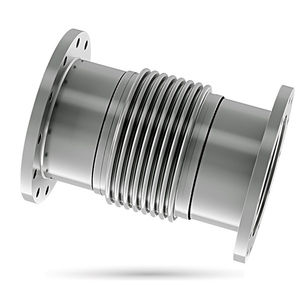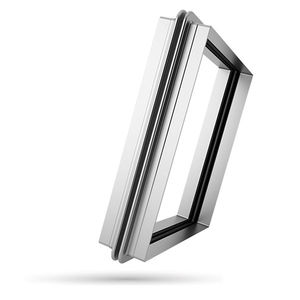

- Products
- Catalogs
- News & Trends
- Exhibitions
Metal pipe expansion joint BM-UN-TIroundflangeaxial

Add to favorites
Compare this product
Characteristics
- Material
- metal
- Configuration
- round
- Installation system
- flange
- Expansion axis
- axial
- Applications
- universal
Description
A universal expansion joint is made of two single bellows separated by a central pipe and flanges with tie-rods. The main objective of this type of construction is to achieve a high capacity for absorption of axial and lateral movements. This capacity is a function of the design of the bellows and the length of the intermediate section.
A longer length means greater capacity for absorption. Possible expansion of the intermediate reel is also absorbed by the two bellows. The installation of control rods designed to support the force of the pressure, and attached using projections on the pipes or flanges, can eliminate the need for fixed anchoring.
Characteristics and Properties
Applicable for low pressures.
Absorbs large lateral movements.
Eliminates the need for fixed anchoring.
The pipe system must be guided.
By installing the control rods, the capacity to absorb axial movements is lost.
Related Searches
- Pipe expansion joint
- Round pipe expansion joint
- Flange pipe expansion joint
- Rubber pipe expansion joint
- Metal pipe expansion joint
- Pipe pipe expansion joint
- Axial pipe expansion joint
- Weld-on pipe expansion joint
- Universal pipe expansion joint
- Pump pipe expansion joint
- Canvas pipe expansion joint
- Gas pipe expansion joint
- Rectangular pipe expansion joint
- Pipe expansion joint for the chemical industry
- Dismantling joint
- Air conditioning pipe expansion joint
- Double pipe expansion joint
- Hinged pipe expansion joint
- ATEX pipe expansion joint
- Belt pipe expansion joint
*Prices are pre-tax. They exclude delivery charges and customs duties and do not include additional charges for installation or activation options. Prices are indicative only and may vary by country, with changes to the cost of raw materials and exchange rates.
















